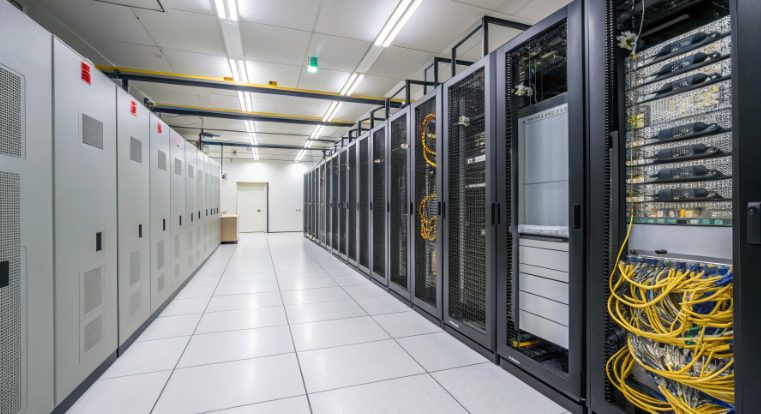Next-Gen Communication: Server Requirements & Adaptation

Next-gen communication technologies, spanning advanced mobile networks, internet of things (IoT), and edge computing, are reshaping digital infrastructure globally. Japan’s hosting and colocation services stand out as critical enablers, addressing core server requirements driven by exponential data growth, ultra-low latency demands, and strict regulatory compliance. This article dissects the technical nuances of server adaptation for next-gen communication, highlighting how Japan’s infrastructure aligns with evolving industry needs.
1. Next-Gen Communication: Core Traits and Server Challenges
The evolution of communication tech is defined by four transformative shifts, each presenting unique server challenges:
- Exponential throughput growth: Transition from gigabit to terabit transmission, creating unprecedented data processing loads.
- Ultra-low latency evolution: Shifting from millisecond to microsecond response times, critical for real-time applications like connected mobility and remote healthcare.
- Massive device connectivity: Supporting millions of devices per square kilometer, a key requirement for large-scale IoT deployment.
- AI-communication fusion: Integrating intelligent computing at the network edge, demanding enhanced processing capabilities beyond traditional server designs.
These shifts translate to tangible server challenges:
- Data deluge management: Scaling to handle concurrent data streams without performance degradation.
- Latency bottlenecks: Overcoming geographic barriers to maintain near-instantaneous response times.
- 24/7 reliability mandates: Ensuring uninterrupted service for mission-critical communication applications.
- Energy and regulatory constraints: Adhering to Japan’s strict energy efficiency standards and data protection regulations.
2. Core Server Requirements for Next-Gen Communication
To address these challenges, servers must evolve across five key dimensions:
2.1 Computing Power: Architecture and Hardware Enhancement
- Multi-core processing optimization: Deploying high-frequency, multi-threaded processors to handle parallel data processing tasks.
- Accelerator integration: Incorporating specialized processing units to support AI inference and multimedia content processing.
- Memory and storage scaling: Implementing large-capacity, high-speed memory modules and fast-access storage solutions to reduce data retrieval latency.
2.2 Low-Latency Optimization: Hardware and Deployment Strategies
- High-speed networking support: Adopting advanced interconnect technologies and high-bandwidth network interfaces for rapid data transfer.
- Edge localization: Deploying server nodes across Japan’s key metropolitan areas to minimize transmission distances.
- Latency-optimized protocols: Implementing lightweight communication protocols to reduce data packet processing time.
2.3 High Reliability and Redundancy Design
- Cluster-based architecture: Utilizing multi-node clusters to eliminate single points of failure.
- Redundant component integration: Incorporating dual power supplies, redundant storage arrays, and hot-swappable components for continuous operation.
- Disaster recovery capabilities: Implementing local backup systems and cross-region redundancy to safeguard against regional outages.
2.4 Energy Efficiency and Regulatory Compliance
- Low-power hardware selection: Opting for energy-efficient components that meet Japan’s strict efficiency standards.
- Thermal management optimization: Deploying advanced cooling solutions tailored to Japan’s data center environments.
- Regulatory alignment: Ensuring compliance with Japan’s data protection and communication service regulations, including data localization requirements.
2.5 Elastic Scalability Capabilities
- Modular hardware design: Enabling incremental capacity expansion to match growing communication demands.
- Virtualization and container support: Implementing virtualized environments to maximize resource utilization and support dynamic workloads.
- On-demand scaling: Supporting automatic resource allocation to handle traffic spikes during peak usage periods.
3. Japan Server Advantages for Next-Gen Communication
Japan’s hosting and colocation infrastructure offers unique advantages for next-gen communication deployments:
- Localized deployment benefits: Proximity to Japan’s core communication networks minimizes latency and improves connection stability.
- Network optimization: Servers tailored to integrate seamlessly with Japan’s leading communication service providers’ infrastructure.
- Enhanced security and compliance: Built-in data encryption and access control features aligned with Japan’s strict privacy regulations.
- 24/7 local support: Dedicated technical teams providing rapid response and maintenance services across Japan’s data center network.
4. Japan Server Sizing for Key Communication Scenarios
Different next-gen communication use cases demand specialized server configurations:
4.1 Industrial IoT (IIoT) Deployments
- Key requirements: High reliability, multi-protocol support, and edge computing capabilities.
- Optimal configuration: Ruggedized server designs with industrial-grade connectivity options and low-power processing for continuous operation.
4.2 Vehicle-to-Everything (V2X) Communication
- Key requirements: Microsecond-level latency, high concurrent connection support, and real-time data processing.
- Optimal configuration: Edge server nodes with high-speed interconnects and specialized processing for low-latency data analysis.
4.3 Remote Healthcare and HD Communication
- Key requirements: High bandwidth capacity, low jitter, and secure data storage.
- Optimal configuration: High-density server clusters with large storage arrays and encrypted communication interfaces.
4.4 Next-Gen Network Trials (6G Readiness)
- Key requirements: Extreme computing power, multi-protocol compatibility, and flexible scaling.
- Optimal configuration: Customizable server clusters supporting heterogeneous computing and high-speed inter-server communication.
5. Future Outlook: Japan Server Evolution Path
The intersection of next-gen communication and server technology will drive three key evolution trends in Japan’s infrastructure:
- Hybrid computing integration: Combining traditional and advanced computing architectures to balance performance and efficiency.
- Green infrastructure expansion: Developing energy-neutral data centers using renewable energy sources and advanced power management.
- Autonomous operation: Implementing AI-driven monitoring and self-healing capabilities to reduce downtime and optimize performance.
6. Conclusion: Leveraging Japan Servers for Communication Innovation
Next-gen communication technologies demand a paradigm shift in server design and deployment, with Japan’s hosting and colocation services offering a compelling solution. By prioritizing computing power, low latency, reliability, and compliance, Japan’s servers are well-positioned to support the most demanding communication applications. As the industry evolves, partnering with Japan’s server infrastructure providers will be critical for organizations seeking to capitalize on the opportunities presented by next-gen communication technologies. The right server strategy, aligned with Japan’s technical and regulatory landscape, will serve as the foundation for successful digital transformation in the connected era.

